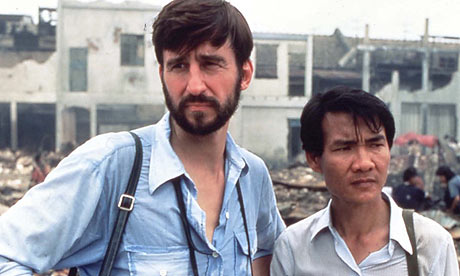The Killing Fields
Directed by Roland Joffé
Starring Sam Waterston, John Malkovich, Haing S. Ngor
Directed by Roland Joffé
Starring Sam Waterston, John Malkovich, Haing S. Ngor
Academy Award winning director Francis Ford Coppola said in
1979 that “quality and integrity” are the two things that make a great movie.
Five years later, Roland Joffé’s directorial debut, The Killing Fields, epitomised
those two characteristics with 141 minutes of emotional, powerful and awe-inspiring
film.
The story of Sidney Schanberg and Dith Pran is one of
friendship amidst the harsh and terrifying realities of the war in Cambodia
during the 1970s. Through the uncensored images of dead bodies and executions the
audience is delivered a realistic view of life for, not just a journalist, but
also a native in Cambodia at the time of the Vietnam War.
Pat Golden’s casting of Haing S. Ngor, a survivor of the
Khmer Rouge and its labour camps, as Pran was a great success, allowing the
debut actor to pick up the Oscar for Best Supporting Actor – the first male
Asian actor to do so.
The Killing Fields
gives an insight into the risk taken by war reporters every day, bringing to
life the efforts of many journalists who have risked their lives in order to
bring people the news from across the world. But the overriding theme is one of
friendship between two men who would stand by each other even in the face of
death.
Critically acclaimed, the film won three Oscars, with a
further four nominations and 26 other awards from several institutions.
Watching this film, it is unsurprising to see why it has been rated as one of the 'greatest tearjerkers' of all time, grasping a sense of happiness, relief and raw emotion through the reuniting of Sidney and Pran in the final scene, as John Lennon's 'Imagine' plays over the top. A sensational film that provides everything an audience wants. A true masterpiece.
Watching this film, it is unsurprising to see why it has been rated as one of the 'greatest tearjerkers' of all time, grasping a sense of happiness, relief and raw emotion through the reuniting of Sidney and Pran in the final scene, as John Lennon's 'Imagine' plays over the top. A sensational film that provides everything an audience wants. A true masterpiece.


